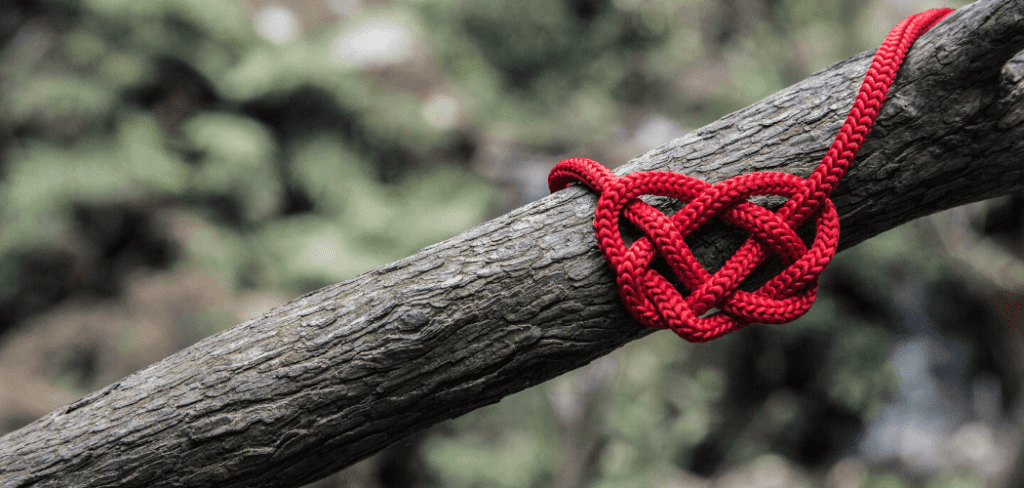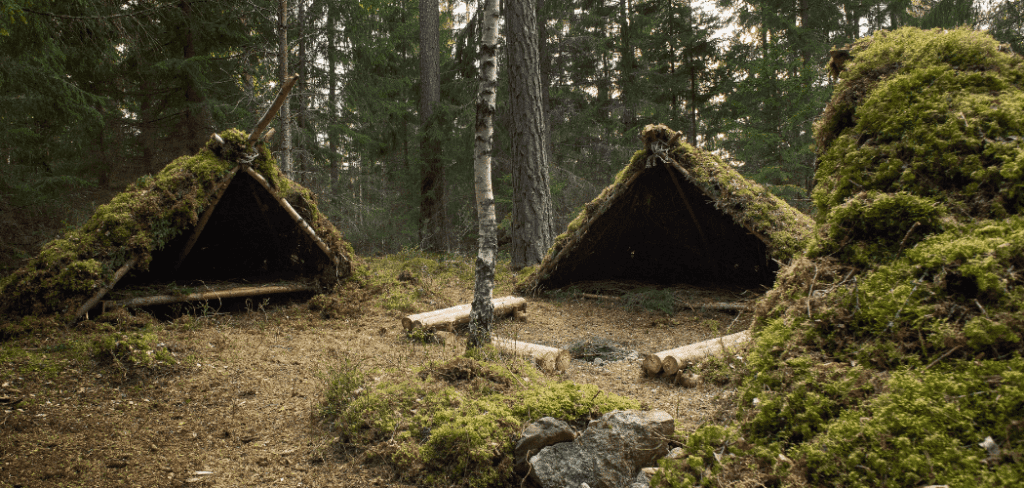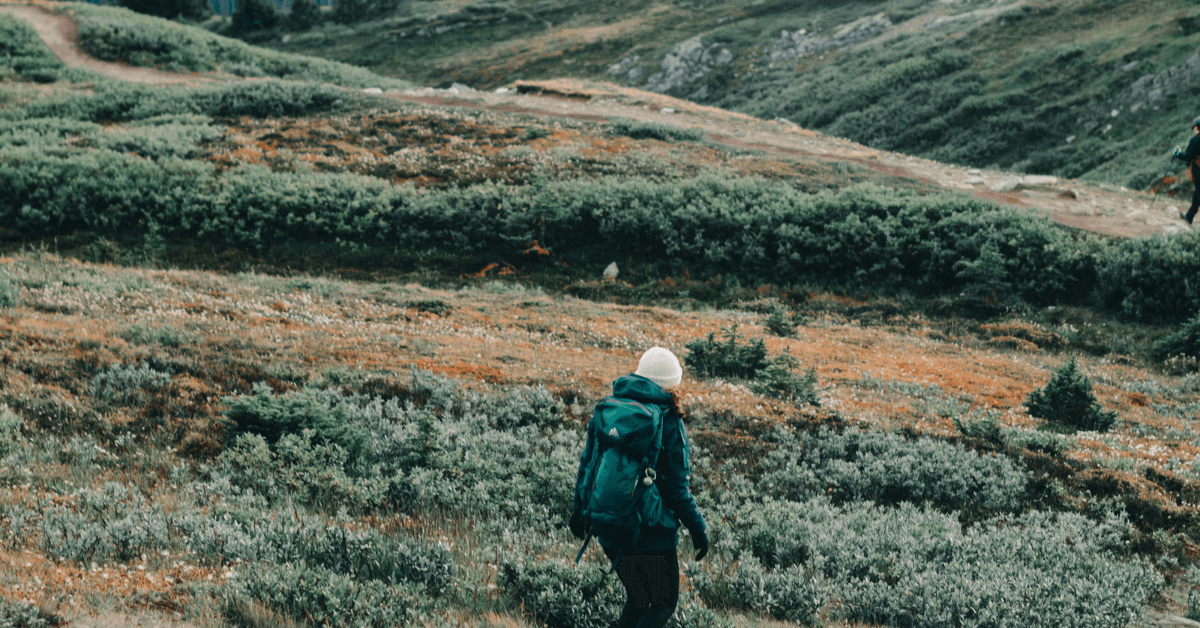As an outdoor enthusiast, there’s nothing quite like the feeling of immersing yourself in nature and experiencing all it has to offer. Whether you’re an experienced hiker, a seasoned camper, or simply someone who enjoys spending time outdoors, knowing how to survive in the wilderness is a vital skill that can make all the difference in an emergency situation.
The great thing about wilderness survival activities is that they’re not only useful in life-or-death situations. They can also be a fun and engaging way to challenge yourself and learn new skills while enjoying the great outdoors. Whether you’re a seasoned survivalist or a curious beginner, there’s something for everyone in this list of 20 best wilderness survival activities for all ages.
From building shelters and starting fires to hunting, fishing, and foraging, this guide has everything you need to know to stay safe and have fun in the wilderness. So grab your gear, head out into the great outdoors, and let’s explore the wilderness together!
1. Wildlife Tracking
Tracking wildlife is an exciting and educational wilderness survival activity that can be enjoyed by people of all ages. Not only does it allow you to observe animals in their natural habitat, but it can also help you to understand their behavior and the way they interact with their environment.
To get started with wildlife tracking, you’ll need to develop some basic skills. First and foremost, you’ll need to be able to identify different types of animal tracks. This can be done by examining the size, shape, and pattern of the tracks, as well as the location and behavior of the animal.
One way to practice identifying tracks is to take a walk in the wilderness and look for signs of animal activity. You can look for tracks in soft soil or mud, or you can search for other indicators, such as chewed plants or scat. Once you’ve found some tracks, take a close look and try to determine what kind of animal they belong to.
In addition to identifying tracks, you can also learn about animal behavior by studying other signs of their presence. For example, you might look for areas where animals have been feeding or bedding down for the night. You can also listen for sounds like bird calls or rustling in the bushes, which can indicate the presence of animals nearby.
As you become more skilled at tracking, you can start to use your knowledge to predict animal behavior and movements. This can be useful in a survival situation, as it can help you to locate food and water sources, as well as avoid potential dangers.
However, it’s important to remember that wildlife tracking should always be done with respect for the animals and their habitat. Avoid disturbing their natural environment or causing harm to the animals themselves.
With practice and patience, you can become a skilled wildlife tracker and gain a deeper appreciation for the natural world around you.
2. Navigation

Navigation is a crucial skill for any wilderness survivalist. Without the ability to navigate, it’s easy to become lost in the wilderness, making it difficult to find food, water, and shelter.
One of the most basic navigation tools is a compass. A compass is a simple device that uses Earth’s magnetic field to indicate direction. By knowing how to use a compass, you can navigate through the wilderness with ease.
Here are the basic steps for using a compass:
- Hold the compass level and flat, with the direction of the travel arrow pointing in the direction you want to go.
- Rotate the compass housing until the north end of the magnetic needle is aligned with the orienting arrow.
- Read the degree markings on the compass housing to determine your heading.
- Follow your heading to reach your destination.
In addition to a compass, it’s also important to know how to read a map. A map can provide valuable information about the terrain, such as the location of water sources, landmarks, and potential hazards.
When using a map, it’s important to understand the different symbols and markings. For example, contour lines can indicate changes in elevation, while dotted lines can represent trails or roads.
3. Wild Edibles
When you’re in the wilderness, finding food can be a challenge. However, there are many edible plants and animals that can be found in the wild. By learning how to identify and harvest these resources, you can supplement your diet and increase your chances of survival.
One of the most important things to keep in mind when foraging for wild edibles is safety. Some plants and animals in the wilderness can be poisonous, so it’s essential to learn how to identify them properly. It’s also important to follow ethical guidelines when foraging, such as not over-harvesting or damaging the environment.
Here are some examples of common wild edibles:
- Berries: Many types of berries can be found in the wilderness, such as blueberries, raspberries, and strawberries. These fruits are high in vitamins and antioxidants and can be eaten raw or used in recipes.
- Nuts: Nuts, such as acorns, walnuts, and hazelnuts, are high in protein and healthy fats. However, they often need to be roasted or processed to remove bitter or toxic compounds.
- Roots and tubers: Many plants in the wilderness have edible roots and tubers, such as wild carrots, onions, and potatoes. These can be boiled or roasted and used in soups, stews, or other recipes.
- Fish and game: Fishing and hunting can be effective ways to obtain protein in the wilderness. However, it’s important to follow local regulations and guidelines to ensure sustainability.
Remember, foraging for wild edibles can be a valuable skill for wilderness survival. However, it’s important to educate yourself and approach it with caution. Always be sure to properly identify plants and animals before consuming them, and be mindful of your impact on the environment.
4. Signaling for Help
In a survival situation, it’s important to have a way to signal for help. There are several methods of signaling, including visual signals, audio signals, and electronic signals.
One of the most basic visual signals is a fire. A fire can be seen from a distance, making it an effective way to attract attention. To create a fire for signaling, use dry, combustible materials, such as tinder, kindling, and fuelwood. Once the fire is burning, add green leaves or other wet materials to create smoke, which can be seen from far away.
Another visual signal is the use of reflective materials, such as a mirror or shiny metal. These materials can be used to reflect sunlight or other light sources, creating a flashing effect that can be seen from a distance.
Audio signals, such as shouting or blowing a whistle, can also be effective for signaling. However, it’s important to conserve your energy and resources when using these methods.
Electronic signals, such as a cell phone or satellite phone, can also be used to signal for help. However, these devices rely on a power source and can be easily damaged or lost.
5. First Aid
When you’re in the wilderness, accidents can happen. It’s important to be prepared with a basic understanding of first aid to address common injuries and illnesses that may occur. Here are some essential wilderness first aid tips to keep in mind:
- Stop bleeding
If you or someone in your group experiences a cut or wound, it’s important to stop the bleeding as quickly as possible. Apply pressure to the wound with a clean cloth or bandage until the bleeding stops.
- Treat burns
Burns can happen from campfires, stoves, or other heat sources. If someone in your group experiences a burn, cool the area with water and cover it with a sterile dressing.
- Address sprains and fractures
If someone twists an ankle or breaks a bone, it’s important to immobilize the area to prevent further damage. Use a splint or wrap the area with a bandage to provide support and protection.
- Identify and treat hypothermia
Hypothermia is a potentially life-threatening condition that can occur when the body loses heat faster than it can produce it. Symptoms include shivering, confusion, and difficulty speaking.
To prevent hypothermia, stay dry and layer your clothing. If someone in your group exhibits signs of hypothermia, remove wet clothing and warm the person with blankets or a fire.
- Address allergic reactions
In the wilderness, it’s important to be aware of potential allergens, such as insect bites or poisonous plants. If someone in your group has an allergic reaction, remove the source of the allergen and administer any necessary medication, such as an EpiPen.
- Seek professional medical help
In some cases, it may be necessary to seek professional medical help, such as in the case of a severe injury or illness. Be prepared with a first aid kit and knowledge of the nearest medical facilities.
By having a basic understanding of wilderness first aid, you can be better prepared to address common injuries and illnesses that may occur in the outdoors. However, it’s important to remember that first aid is not a substitute for professional medical help.
In case of an emergency, always seek professional medical attention as soon as possible.
6. Knot Tying

Knot tying is an essential wilderness survival skill that every outdoor enthusiast should learn. Whether you’re setting up a shelter, hoisting a food bag, or securing a boat, knots can help you get the job done safely and efficiently. Here are some basic knots every outdoor enthusiast should know:
- Square knot: The square knot is a basic knot that can be used to join two ropes together. It’s easy to tie and untie, making it a versatile knot to have in your repertoire.
- Bowline knot: The bowline knot is a loop knot that creates a secure loop at the end of a rope. It’s commonly used in rock climbing and rescue situations.
- Clove hitch: The clove hitch is a simple knot that can be used to secure a rope to a tree or post. It’s often used to set up a shelter or to tie off a canoe.
- Taut-line hitch: The taut-line hitch is a useful knot for adjusting the tension of a line. It can be used to secure a tent or tarp, or to adjust the tension of a clothesline.
- Fisherman’s knot: The fisherman’s knot is a strong and reliable knot for joining two lines of similar size. It’s commonly used in fishing and boating applications.
- Prusik knot: The Prusik knot is a friction knot that can be used for ascending or descending a rope. It’s commonly used in mountaineering and rescue situations.
Practice tying these knots until you can tie them quickly and confidently. Remember, proper knot tying technique is essential for ensuring the safety and security of yourself and others in your group.
7. Tool Making
When you’re out in the wilderness, having the right tools can make all the difference. But what do you do if you find yourself without the necessary gear? That’s where tool making comes in. By using natural materials and a little creativity, you can fashion tools that will help you survive in the wilderness.
Here are some simple tools you can make in the wilderness:
- Spear: A spear can be made by sharpening a long, straight stick. It can be used for hunting, fishing, or self-defense.
- Bow and arrow: A bow and arrow can be made by fashioning a bow from a flexible branch and attaching a string made from sinew or plant fibers. Arrows can be made from straight sticks and fletched with feathers or other materials.
- Fish trap: A fish trap can be made by weaving a basket from branches or vines and placing it in a stream or river. Fish will swim into the trap and be unable to swim out.
- Flint knife: A flint knife can be made by finding a piece of sharp flint and knapping it into a blade. The blade can be attached to a handle made from wood or bone.
- Fire drill: A fire drill can be made by using a stick and a piece of wood to create friction. With enough practice, this method can produce sparks that can be used to start a fire.
Remember to always be careful when handling sharp objects and use caution when hunting or fishing.
Related: 10 Best Survival Books For 3rd Graders
8. Fishing
Fishing is a valuable wilderness survival skill that can provide you with a steady source of food. There are many ways to fish in the wilderness, including using a fishing pole, spearfishing, and building a fish trap.
- Fishing Pole: A fishing pole is a simple tool that can be made using a long, flexible branch or rod and attaching a fishing line with a hook and bait. Bait can be anything from worms to insects or small pieces of meat. When fishing with a pole, it’s important to remain patient and let the fish come to you.
- Spearfishing: Spearfishing involves using a spear to catch fish. To spearfish, you’ll need a sharp-tipped spear and the ability to hold your breath underwater. Spearfishing requires patience and skill but can be an effective way to catch fish in shallow water.
- Fish Trap: A fish trap is a passive way to catch fish. To make a fish trap, weave a basket out of flexible branches or vines and place it in a river or stream. Fish will swim into the trap but will be unable to swim out.
When fishing in the wilderness, it’s important to know the local laws and regulations for fishing. Some areas may require a fishing license or have restrictions on the size and number of fish that can be caught. Always practice catch and release when possible to preserve the fish population for future generations.
In addition to the methods listed above, you can also try using a net or handline to catch fish. The more methods you know, the better your chances of catching a meal in the wilderness.
9. Water Procurement
Water is essential to survival in the wilderness. Without it, dehydration can set in quickly, leading to fatigue, confusion, and even death. In a survival situation, it’s crucial to know how to procure water safely and effectively.
One of the easiest ways to procure water in the wilderness is to find a natural source, such as a river, lake, or stream. However, it’s important to remember that not all water sources are safe to drink. Even clear, flowing water can be contaminated with harmful bacteria and viruses.
To make water safe to drink, you’ll need to purify it. There are several methods of water purification, including boiling, filtering, and chemical treatments. Boiling is one of the most effective methods of water purification, as it kills most bacteria and viruses. To boil water, follow these steps:
- Build a fire and bring water to a rolling boil for at least one minute.
- Let the water cool before drinking.
If you don’t have a container to boil water in, you can also use a rock or other heat-resistant object to heat the water directly. However, be careful not to burn yourself.
If boiling is not an option, you can also use a water filter or chemical treatment to purify water. Water filters come in many different shapes and sizes, but they all work by removing impurities from the water. Chemical treatments, such as iodine tablets, can also be effective in purifying water.
10. Shelter Building

When you find yourself in a survival situation in the wilderness, shelter is one of the most important things you’ll need to consider. Whether you’re dealing with extreme temperatures, harsh weather conditions, or dangerous animals, having a shelter to protect yourself from the elements can make all the difference.
The good news is that building a shelter in the wilderness doesn’t have to be complicated or require expensive gear. In fact, with some basic knowledge and a few simple tools, you can create a shelter using natural materials found in the wilderness.
One of the most popular and effective types of wilderness shelter is the debris hut. Here’s how to build one:
- Find a long, sturdy stick to use as the ridgepole of your shelter. This should be longer than the width of your body when lying down.
- Prop up the ridgepole at an angle against a tree or other sturdy support, with one end on the ground and the other end raised several feet off the ground.
- Lay a row of long, straight sticks against the ridgepole, starting at the ground and working your way up, with each stick overlapping the previous one by a few inches.
- Once you have a row of sticks on either side of the ridgepole, start adding smaller sticks and twigs to fill in the gaps between the larger sticks.
- Keep layering sticks and debris until the shelter is several feet high and completely covered with natural materials.
- Create an entrance by digging a small tunnel into the side of the shelter, leaving a small gap for ventilation.
With this basic knowledge of shelter building, you’ll be well on your way to surviving in the wilderness. Remember to always prioritize shelter when you find yourself in a survival situation and to use the natural materials around you to build a sturdy and effective shelter.
11. Orienteering
Orienteering is a wilderness survival skill that involves using a map and compass to navigate through unfamiliar terrain. It is an important skill for hikers, backpackers, and outdoor enthusiasts to have in their toolkit, as it can help them find their way back to safety in case they get lost or disoriented.
Here are some tips for mastering the art of orienteering:
- Get the Right Gear
Before you set out on an orienteering adventure, make sure you have the right gear. This includes a map of the area you will be exploring, a compass, and a GPS device (if possible). It’s also a good idea to carry a whistle, a flashlight, and a fully charged phone in case of emergencies.
- Learn to Read a Map
A map is only useful if you know how to read it. Take the time to study the map before you head out, paying close attention to key features like topography, water sources, and landmarks. Make note of any potential hazards, such as steep inclines or water crossings.
- Understand Magnetic North
The compass is a vital tool for orienteering, but it can be confusing if you don’t understand how it works. The needle on the compass points towards magnetic north, which is not the same as true north. Make sure you know how to adjust for declination (the difference between magnetic north and true north) before you set out.
- Practice Navigation Techniques
Once you have your gear and understand the basics, it’s time to practice. Start with easy trails and work your way up to more challenging terrain. Practice taking bearings (using the compass to measure the angle between two points) and following a specific heading. Make note of landmarks and trail intersections along the way.
- Use Orienteering Courses
Many parks and wilderness areas have designated orienteering courses that are designed to help you hone your skills. These courses typically have a series of checkpoints marked on a map, and you must navigate your way from one checkpoint to the next. This is a great way to practice your skills in a controlled environment.
Orienteering can be a fun and rewarding way to explore the wilderness, but it’s important to remember that it can also be dangerous if you don’t know what you’re doing. Take the time to learn the basics, practice, and always be prepared for emergencies.
With the right skills and gear, you can navigate your way through any wilderness environment.
